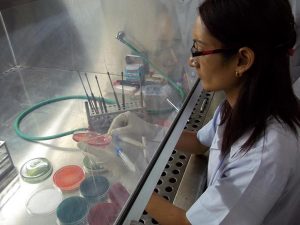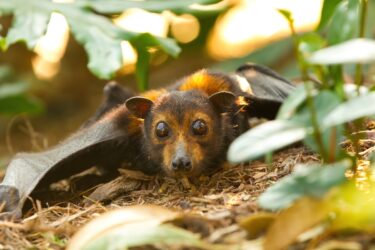 The National Institutes of Health recently announced it would renew funding research enabling scientists to alter pathogens to make them more dangerous, raising questions about whether the Trump administration had opened the door to a potential pandemic.
The National Institutes of Health recently announced it would renew funding research enabling scientists to alter pathogens to make them more dangerous, raising questions about whether the Trump administration had opened the door to a potential pandemic.
The decision follows a three-year ban on such funding after several accidents at federal laboratories in 2014. A Centers for Disease Control and Prevention lab accidentally exposed workers to anthrax and shipped a deadly flu virus to another lab that had asked for a benign strain. The NIH found vials of smallpox in a freezer that had been forgotten about and thus weren’t secure.
During the three-year ban on funding projects – known as “gain of function” research – the Department of Health and Human Services developed a framework on how such research may be conducted to protect the public. The research criteria were drafted during the Obama administration, but weren’t released until the end of 2017. Gain of function research is aimed at helping scientists understand how a pathogen can become more deadly so that an antidote can be developed before there is a pandemic.
Among the studies that were halted three years ago were research on the pandemic potential for avian flu, severe acute respiratory syndrome (SARS) and middle east respiratory syndrome (MERS). Such studies can now go forward. But to do so, the NIH says a researcher must go through a review process demonstrating the study is scientifically sound, benefits public health and is conducted in a high-security lab.
The NIH decision has been controversial. Marc Lipstich, an epidemiologist at the Center for Communicable Disease Dynamics at the Harvard School of Public Health, is skeptical that the new NIH review process will be rigorous enough. Michael Osterholm, director of the Center for Infectious Disease Research & Policy, believes such research can be done safely, but he wants to see limits on how results of the research are communicated and isn’t freely available to the public. Biosecurity experts fear that a rogue scientist could take such information and create a bioweapon.
Given the controversy in the research community and the fears such research raises, reporters may want to reach out to research laboratories in their community to learn more about the biosafety measures that are taken to prevent either accidental or deliberate release of deadly pathogens.
More reading:
- Boston University’s National Emerging Infectious Diseases Laboratory Gets Green Light
- What is bioterrorism
- Inside the Hot Zone: A Discussion of Ebola Virus BLS4 Containment
- Feds Lift Gain of Function Research Pause, Offer Guidance
- The NIH Lifted a Ban on Deadly Mutant Virus Research – Here’s Why
- A Federal Ban On Making Lethal Viruses Is Lifted







